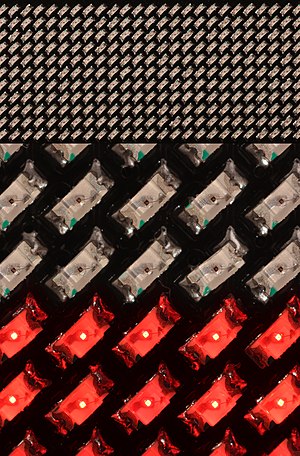A light-emitting diode (LED) is a semiconductor light source that emits light when an electric current flows through it. When a current passes through the diode, which is formed of two different semiconductor materials, electrons are able to recombine with electron holes, releasing energy in the form of photons. This effect is called electroluminescence. The color of the light is determined by the energy required for electrons to cross the band gap of the semiconductor. White light is obtained by using multiple semiconductors or a layer of light-emitting phosphor on the semiconductor device. The earliest practical LEDs, which appeared in 1962, emitted low-intensity infrared and red light. Modern LEDs are available with high output in a range of visible, ultraviolet, and infrared wavelengths.
This picture shows three different views of an 11×44 LED matrix lapel name tag display. The top image is of a little over half of the display, the center image is a close-up of the LEDs in ambient light, and the bottom image is the LEDs in their own red light.Photograph: Janke
